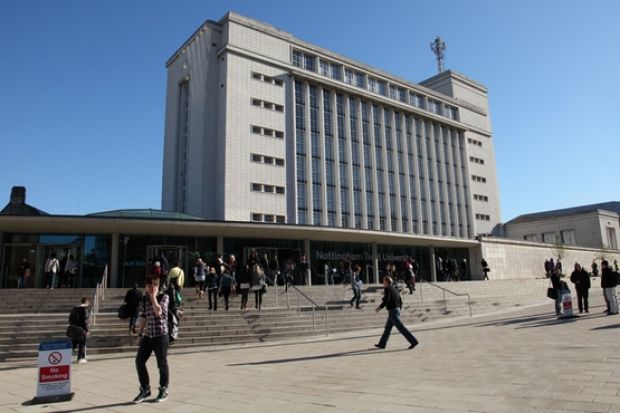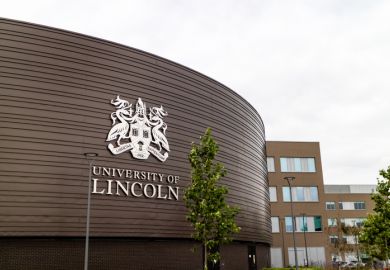English higher education institutions have been informed of their shares of direct public funding for next year, with the allocations at some new universities being cut by around 40 per cent yet again as the new fees and funding system takes fuller effect.
The Higher Education Funding Council for England published on 21 March its provisional funding allocations for universities and colleges in 2013-14.
The total recurrent grant allocation for higher education institutions - consisting of funding for teaching, research and third-stream activities - falls 18.1 per cent to £3.95 billion.
The announcement also details the award of 5,000 student places to institutions under the government’s scaled-back “core-and-margin” system, which this year offers additional places rather than reallocating ones top-sliced from universities.
Nottingham Trent University is the biggest winner under the system, with 333 extra places.
Hefce has also published details of over-recruitment fines for universities in 2012-13.
Fines for the nine higher education institutions that over-recruited totalled just £802,735, down from £21 million the previous year - a figure reflecting the sharp drop in student numbers in the first year of higher tuition fees.
The identities of the institutions fined may show some of those faring best in recruitment terms under the new system.
The University of Northampton was hit by the biggest fine, £179,686, although it exceeded its student number cap by only 26.
De Montfort University and the University of Bedfordshire also received some of the larger fines.
Perhaps surprisingly, Russell Group member the University of Sheffield was also among those penalised.
In 2013-14, the A-level grade threshold at which universities can recruit unlimited numbers of students will drop from AAB to ABB.
At a press conference announcing the grant allocations, Hefce representatives explained that they had taken 30,000 places from the sector’s undergraduate number control to provide these places.
In addition to the 85,000 places allocated for AAB, that adds up to 115,000 student places being subject to open competition between universities.
In the grant announcement, teaching grant for high-cost subjects has been awarded a 1 per cent uplift in the rate per student.
Research funding remains exactly the same in cash terms at £1.6 billion.
The drop in total grant is explained by the fact that in 2013-14, another cohort of “old regime” students part-funded by direct teaching grant will have graduated, to be replaced by more “new regime” students for whom funding is largely routed via tuition fees.
Universities with a greater number of longer courses (and therefore more old regime students), high-cost subjects (where teaching grant remains in place) and higher levels of research funding are experiencing gentler declines in their direct funding.
Institutions without those characteristics are being hit by bigger reductions, including Leeds Metropolitan University (down 41.2 per cent for 2013-14) and the University of Sunderland (a decline of 40 per cent).
Hefce says that the allocation for teaching grant in high-cost subjects for new regime students has increased from £131 million to £330 million for 2013-14.
This figure includes additional funding for taught-postgraduate students that “consolidates the interim allocation we provided last year”.
The funding council adds that high-cost subject grant for new regime students “has been extended to certain subjects in price group C”, a category that includes archaeology and now media studies.
Register to continue
Why register?
- Registration is free and only takes a moment
- Once registered, you can read 3 articles a month
- Sign up for our newsletter
Subscribe
Or subscribe for unlimited access to:
- Unlimited access to news, views, insights & reviews
- Digital editions
- Digital access to THE’s university and college rankings analysis
Already registered or a current subscriber? Login




